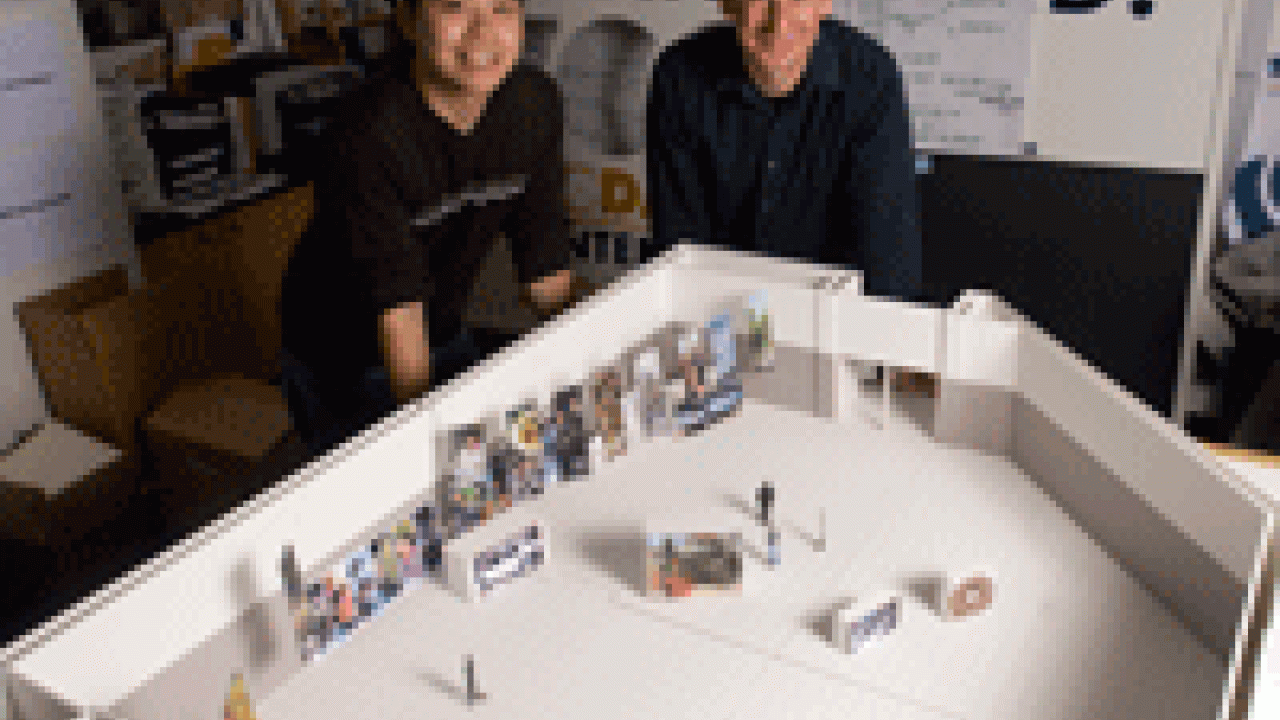The UC Davis Centennial exhibition at the California State Fair this summer will showcase the university's tradition of "dreaming big." Even if "big" is sometimes too big, like, say, the size of a Unitrans double-decker bus.
These British imports are big historically -- dating back to 1968, when a student-led initiative launched a UC Davis transit service with two of the used double-deckers.
They are big physically, too. So big, in fact, that even one cannot fit inside the university's 6,000-square-foot pavilion at Cal Expo. "We quickly realized we couldn't fit it in the door," explained Tim McNeil, an assistant professor in the Design Program.
But UC Davis never gives up. People will be able to see a double-decker and climb aboard it outside the university's "Dream Big" pavilion during the state fair's 18-day run, Aug. 15 through Labor Day, Sept. 1.
Inside the pavilion, fairgoers will see a sampling of UC Davis scholarship and research in food and agriculture, energy, the environment, health, and community building and global understanding, plus a display of artwork, theatrical costumes, musical instruments and antique bicycles from campus collections, and a large display of Aggie Pride in photo banners hanging from the ceiling.
"We want to send a message that there's a lot going on here," said McNeil, who was a natural choice to help plan the exhibition. His specialty is exhibition design, having worked at the J. Paul Getty Museum in Los Angeles for 15 years prior to joining the UC Davis faculty in 2005.
He is not building the exhibit (the state fair crew does that), but he and some of his students played a key role in developing the "Dream Big" concept and selecting its key elements. Two of those students have jobs at the fair, and they in fact might help build the exhibition.
Assistant Vice Chancellor Bob Segar, who leads the university's centennial team, acknowledged the assistance: "We are so fortunate to have the help of Tim McNeil and his students. They have provided tremendous insight to make the exhibit fun and effective for all viewers."
The planning process was a campuswide effort, involving workshops with representatives from all the schools and colleges. "There were tons of great ideas," Segar said. "The only challenge was narrowing them down."
The exhibition planners had lots to choose from, McNeil explained, "Because, when you think about it, the university is one big exhibit space, with an amazing breadth of content.
"Wherever you go, there are these special areas, whether it be in the arts or engineering, where we are telling our story. For the fair, we are highlighting the diversity of what's here."
For example, his department's very own Design Museum and Design Collection, of which he is the director, includes a 1908 graduation dress -- and it will be featured in the state fair pavilion.
The gown's date is significant because 1908 was the year when the first students took up residence on the Davis campus, then called the University Farm. The state Legislature had selected Davisville as the farm site in April 1906 and UC opened the gates in September 1906. But, for the purposes of the centennial, the year of the students' arrival dictated 2008-09 as the time for the 100-year celebration.
It all starts at the state fair, which annually draws some 1 million visitors, primarily from northern California and likely including many who have never been to UC Davis or any university, and who may know little about what goes on at a university.
"We want to make sure we present ourselves in a way that is accessible and not off-putting, that we have a lot to offer to the region, the state, the nation and the world," McNeil said.
"The challenge is how to package some of what we do, and show it to fair visitors," he added, "and do it in a way that we really engage people."
And, just as important, how do we make it fun? Because the state fair, after all, is all about fun -- "Big Fun," as the fair slogan says.
Another critical element: How do you hold people's attention when they are rushing to visit the county exhibits, take in a concert, get to the carnival, and buy corn dogs and deep-fried Twinkies?
McNeil explained the exhibition designer's general rule of thumb: 3-30-3, "catering to the streakers, strollers and studiers": three seconds to grab a visitor's attention; 30 seconds to tell your story, if the visitor is interested; and three minutes more if the visitor cares to dig deeper.
So, there will be lots to see, lots to put your hands on and lots to think about if you are so inclined.
Watch the "Designing for the State Fair" video: centennial.ucdavis.edu.
Media Resources
Clifton B. Parker, Dateline, (530) 752-1932, cparker@ucdavis.edu
